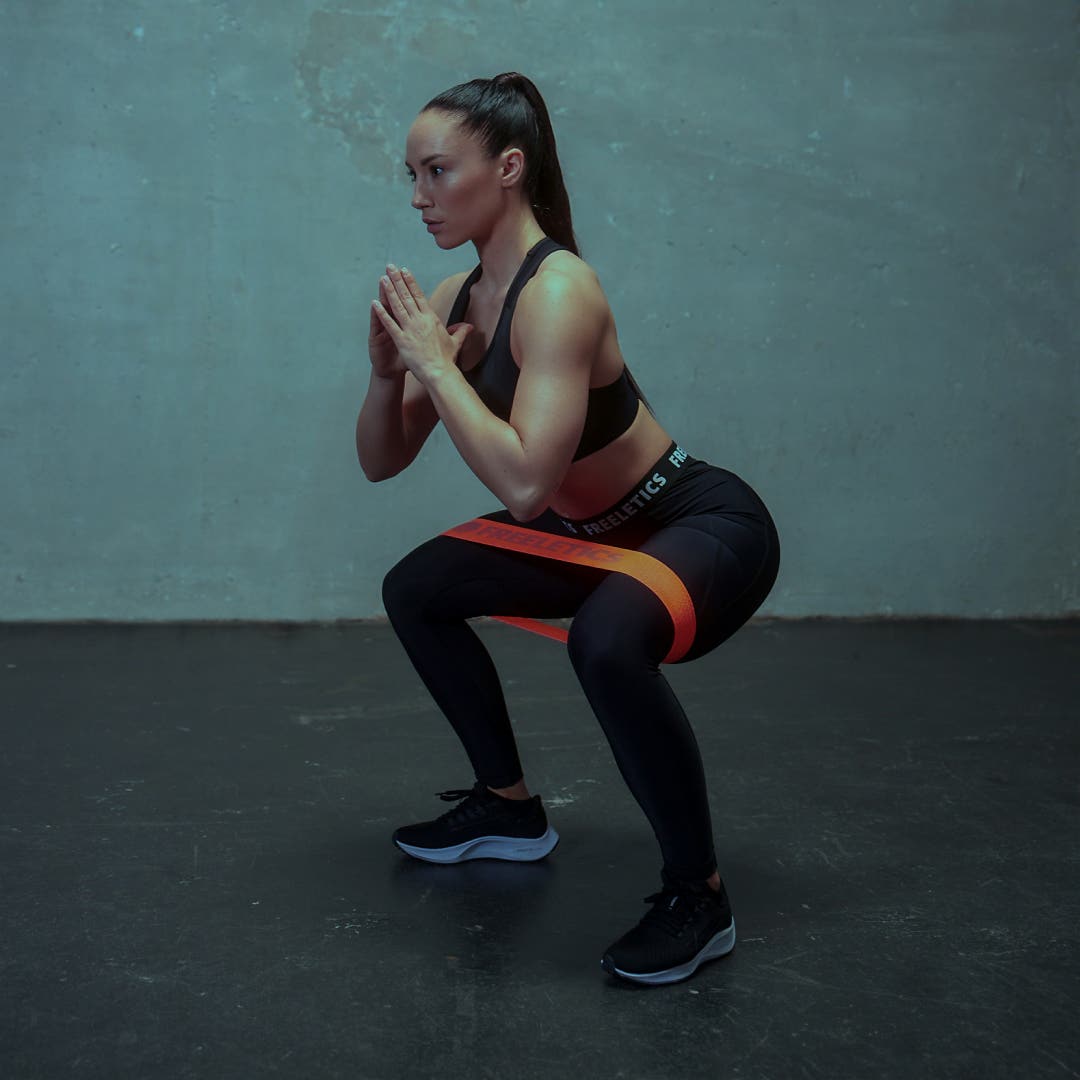As it turns out, your favorite piece of elastic training equipment, the resistance band, isn’t the only band in town.
There’s also a smaller version, affectionately known as the mini band, that’s been gaining in popularity for a good while now. And it’s more than just a travel-sized resistance band – its size and construction can actually help you work out in ways that its standard-sized counterpart can’t.
Let’s take a closer look. (Figuratively speaking, that is. They’re not *that* small.)
Mini bands vs. standard resistance bands
So what do we mean by “mini”, in this case?
Let’s think about it in terms of some helpful numbers. Your standard resistance band is usually around 1 meter in length, which makes it ideal for giving you both support and/or added tension as it stretches to about the length of your full head-to-toe height (and longer). Because of this, it’s ideal for exercises like the Assisted Pullups or Band Reverse Flies that the Freeletics Coach assigns you.
Mini bands are around 25 to 30 cm and are made specifically with smaller distances within your range of motion in mind. Just a bit of pulling against the elastic produces levels of tension that get your muscles working hard. Mini bands usually loop around your ankles, knees, or elbows when used in exercises.
How does working out with a mini band benefit you?
One advantage is that mini bands are able to produce significant tension and resistance in a small amount of space, which is great for being able to work arms and legs very easily and creatively, pretty much anywhere.
Another major benefit to using a mini band is to target specific muscles that are important to maintain but hard to target with classic exercises.
Strengthening muscles around the knee, elbow, and shoulder can help reduce the risk of injuries to the ligaments and tendons around those joints, which are often vulnerable during strenuous sport and exercise.
Physical damage to the rotator cuff (tendons in your shoulder) and ACL (the anterior cruciate ligament, in your knee), for example, are some of the most painful and slow to rehabilitate injuries, and maintaining joint health in these areas through regular exercises can be a necessary preventive measure.
But even for those not at great risk for complex joint injuries, exercising those areas is also important for maintaining a healthy level of mobility.
Some basic exercises to get you started with mini bands
Since they’re so ideal for targeting muscles that few other exercises can target, try using mini bands for warmup and mobility exercises during your warmup routine, if you are brand new to using them.
Of course, the intensity of familiar exercises like Pushups, Hip Raises, or Squats can be enhanced (and made more challenging) with a mini band.
As you use them in your exercises, focus on keeping tension in the band at all times. In order to keep tension, you’ll need to be mindful as you perform the motions and contract muscles that are typically less used.
As you do this, your equipment provides you with very simple and effective feedback – keep the band tense, and you know you’re working your muscles properly. Let it slacken, and you know you’ve let up a little bit.
Using mini bands is a great addition to your workout routine. For all the exercises, make sure to start with an easy band. As you feel more and more comfortable, you can progress toward more repetitions, or a heavier band.
Upper Body
Pushups with Band
Using a mini band to perform Pushups is actually an easier variation of this classic bodyweight exercise.
Simply place the band as high as possible on the upper arm and position your hands under your shoulder as usual.
As you lower yourself down and your elbows angle outward, you will build up tension in the band. It's normal that the band will come in contact with your chest as you lower yourself down.
Push up once your chest touches the ground and the band will actually assist you by using the stored elastic energy to help straighten your arms and bring yourself back up to the starting position.
Shoulder external rotations
External shoulder rotation is an effective shoulder warmup exercise.
Oftentimes, shoulder external rotators muscles are neglected from training routines. Take a few minutes in your training to strengthen those muscles. Consistently practicing these rotations will have a positive effect on your posture, shoulder health, and performance.
Make sure to keep the elbows close to your body and use slow and controlled movements throughout this exercise.
Training with mini bands
Lower body
Squats with Band
Using a mini band can help you perfect your Squat technique.
Position a band around your knees while performing Squats. You want to make sure to keep tension in the band at all times. This is important feedback to ensure that your knees are properly positioned and aren't caving inward.

Kickbacks
This is a fantastic exercise to target the glutes and hamstrings of the working leg. Place the band around your feet.
Reach backward with one foot while stretching the band. As you push the working foot behind you and engage your glutes, the hamstring of the same leg will be activated to keep your leg up off the ground.